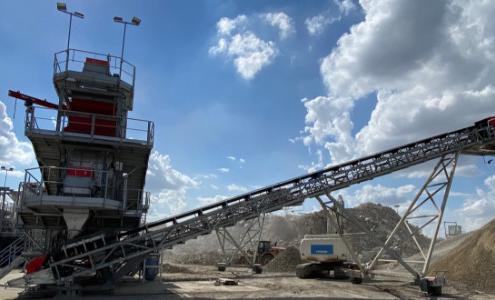I. Understanding dust on construction sites
Dust sources on building sites
Dust on construction sites comes from a variety of sources. Activities such as clearing, excavating, drilling, dumping materials, demolition and transport can generate dust. Construction materials themselves, such as cement, wood and metals, can also produce dust when handled. In addition, moving vehicles and site machinery can raise dust from the ground.
The nature of dust on construction sites
The nature of dust on construction sites varies according to the materials and activities being carried out. It can include fine particles of soil, sand, cement, wood, metals and many other materials. Some of these particles may be small enough to be inhaled, causing health problems. In addition, some dusts, such as those from concrete and certain metals, may be alkaline or toxic, increasing health risks.
Factors affecting dust production
Several factors can impact on the production of dust on a construction site. The nature and intensity of construction activities are major factors. Work involving the handling of dry materials or the demolition of existing structures can generate a lot of dust. Weather conditions, such as wind and drought, can also increase dust production by dispersing particles more widely. Finally, inadequate control of dust sources, such as a lack of dust suppression systems or coverage of stored materials, can lead to increased dust production.
II. Impact of dust on health and machine operation
Consequences for worker’s health
Allergies
Allergies are one of the major consequences of exposure to dust on construction sites. Dust particles can trigger allergic reactions in sensitive individuals. These reactions can range from mild to severe, from sneezing and itchy eyes to asthma and shortness of breath. In addition, some dusts, such as wood dust, can cause contact dermatitis, an allergic skin reaction.
Chronic lung disease
Prolonged exposure to dust on construction sites can also lead to chronic lung disease. Inhalation of fine particles can cause damage to the lungs and airways, leading to conditions such as pneumoconiosis, chronic bronchitis and emphysema. In addition, some dusts, such as asbestos and silica, are known to have carcinogenic potential.
Effects on machine operation
Machine breakdown
Dust can cause serious problems for machinery used on construction sites. Dust particles can get into mechanical and electrical components, causing premature wear and sometimes breakdowns. Systems such as engines, transmissions and ventilation systems can be particularly vulnerable. This can lead to high repair or replacement costs.
Delays in construction projects
In addition to machine breakdowns, dust can also cause delays in construction projects. Interruptions caused by the need to clean or repair equipment can slow the progress of work. In addition, dusty conditions can make it difficult to carry out certain tasks accurately, such as maintenance. Finally, health problems caused by dust can lead to worker absences, which can also contribute to delays.
III. Solutions for dust control on construction sites
Control measures
Industrial vacuums
One of the most effective methods of controlling dust on construction sites is the use of industrial vacuums. These machines are designed to suck up dust particles, preventing them from becoming airborne. They are particularly useful for cleaning up debris and dust that accumulates during the construction process.
Dust suppression
One of the most commonly used methods of dust suppression is water spraying. This technique involves spraying water over the areas where dust is generated, in order to capture the dust particles and cause them to fall to the ground. This is a natural, simple and economical method, which generally does not require the use of chemicals.
Fogging cannons
Fog guns are often used on construction sites to control dust. These devices spray water into the air, capturing dust particles and causing them to fall back to the ground. They are particularly useful for dust control during demolition or materials handling.
Worker training and awareness
Formation sur les risques liés à la poussière
An important part of dust control on construction sites is worker training and awareness. Workers must be trained on the risks associated with exposure to dust and how to protect themselves. This training should include information on the different sources of dust on site, the potential health effects and dust control methods.
Use of personal protection equipment
Finally, the use of personal protection equipment (PPE) is essential to protect workers from exposure to dust. This can include dust masks, safety glasses, helmets and other types of protection equipment. Workers should be trained in the correct use of this equipment and encouraged to use it whenever they are exposed to dust.
In conclusion, the problem of dust on construction sites is a subject that requires increased attention. The impact on workers’ health and the operation of machinery is significant, and it is essential that measures are taken to control the production and spread of dust.
There are many solutions for controlling dust, and it is the responsibility of both construction companies and workers to implement these measures. Worker training and awareness are essential, as is the proper use of personal protection equipment.
It is part of our collective responsibility to ensure that our construction sites are as safe and healthy as possible. We must therefore continue to raise awareness of the importance of this problem and encourage the introduction of best practices for dust control on construction sites.
In the end, improved dust management not only protects the health of workers and preserves the efficiency of machinery, but also contributes to a cleaner, safer and more sustainable working environment. This is an obvious and necessary objective for the construction industry.


